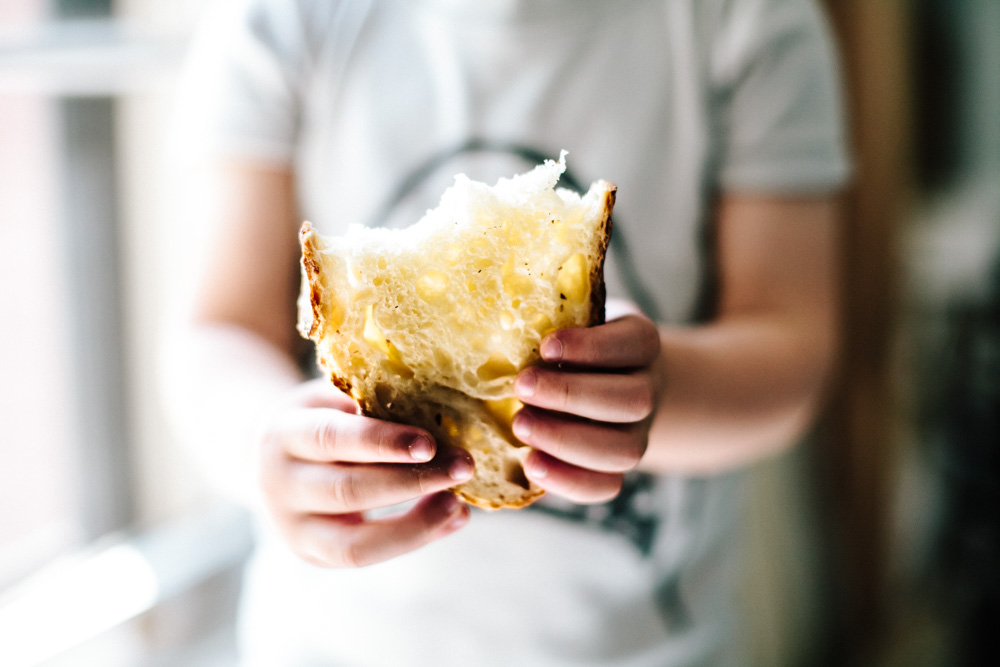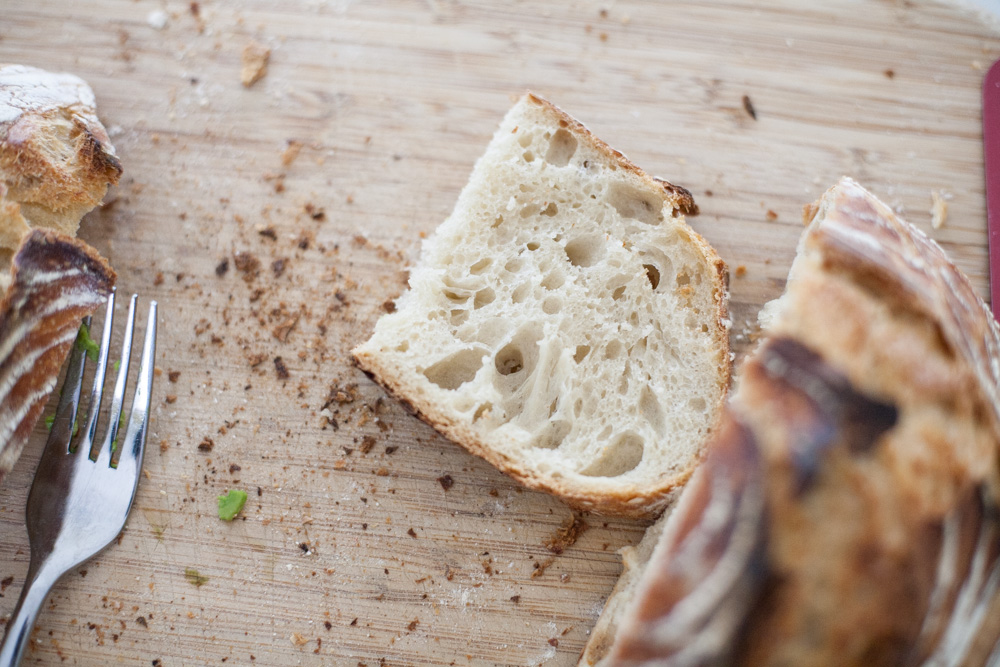When you’re a sourdough beginner, reading recipes is like entering a whole new world. You’re figuring out words like autolyse, not to mention buying new tools like brotforms and scoring knives. So, since several of you have asked where to start, here’s advice, one newbie to another. Fresh from my first success (!), here’s what you actually need–and what’s only nice, not necessary, to have.

At the beginning of this week, I put my research to the test and baked (my first solo) sourdough. Using this beginner’s recipe from The Perfect Loaf (tip: bookmark this recipe!), I used all organic all-purpose flour instead of the recommended bread-wheat-rye flour combo, spent a little over 24 hours following steps and monitoring my dough and, guess what? It worked! No one was more surprised than I to find a golden crust, a soft crumb and stretchy slices I could see light through … it really was magic.


If you’re reading this and feeling intimated, don’t. The way I see it, if I (slow learner, not a natural) can bake sourdough, you can bake sourdough. So take heart!
Must-Have (or Nice-to-Have) Tools for a Sourdough Beginner
When you’re brand-new to sourdough baking, here are your must-haves:
- (must) A starter. You can grow your own sourdough starter, but that’s a lot to take on, so one way to save yourself a step is to get an active starter from someone else. Ask around, see if someone has one to share and, if not, buy from a reliable resource like Breadtopia (affiliate link) on Amazon.
- (must) A scale. Sourdough recipes will talk in grams, i.e., this many grams of starter, that many grams of flour. You want a reliable kitchen scale to measure your weights; I use (affiliate link) this one.
- A Danish dough whisk. This one’s not at all required; there are many ways to mix dough. However, I bought this for my husband a while ago at Zoe Francois’s recommendation on Instagram, and it’s perfect for combining flour and water well. Here it is on (affiliate link) Amazon.
- A brotform. You can proof your dough in any high-walled bowl, but a brotform allows you to achieve cool lines on your finished loaf (line the one pictured at the top of this post). There are many sizes and styles available (affiliate link) on Amazon.
- A bowl scraper. Whenever you’re working with sticky dough, and that includes high-butter pie crusts, for example, a bench scraper comes in handy. Especially useful for sourdough or other bread doughs is a (affiliate link) plastic scraper, i.e., bowl scraper, which you can use to move dough out of a bowl onto the counter.
- An instant read thermometer. I don’t have one of these yet, and my bread still turned out, so it’s not an absolute. However, The Perfect Loaf makes a good case for temperature being an ingredient in sourdough–a factor that directly impacts your end result. For this reason, I’ve got (affiliate link) one on my wish list.
- A bread lame (scoring knife). Also on my wish list is one of (affiliate link) these scoring knives so I can play with fun patterns on my loaves. After browsing so many beauties on Instagram, of course I’m all in for this adventure. So many life goals in this roundup post.
- A Dutch oven. You can use a Dutch oven or (affiliate link) a combo cooker for the beginner’s recipe I used, or you can also use a baking stone and a tray filled with water to create the same steamy effect in your own oven. Right now I am a fan of the convenience and predictability of my (affiliate link) 3.5-quart Le Creuset.
For anyone happening across this post and looking for clarity, here’s my advice, one beginner to another: get yourself a starter and these other tools, pull up a good beginner recipe like the one from The Perfect Loaf and head to the kitchen. I’m proof that you can do this!




3 thoughts on “One Sourdough Beginner to Another: 8 Tools to Buy”
Comments are closed.